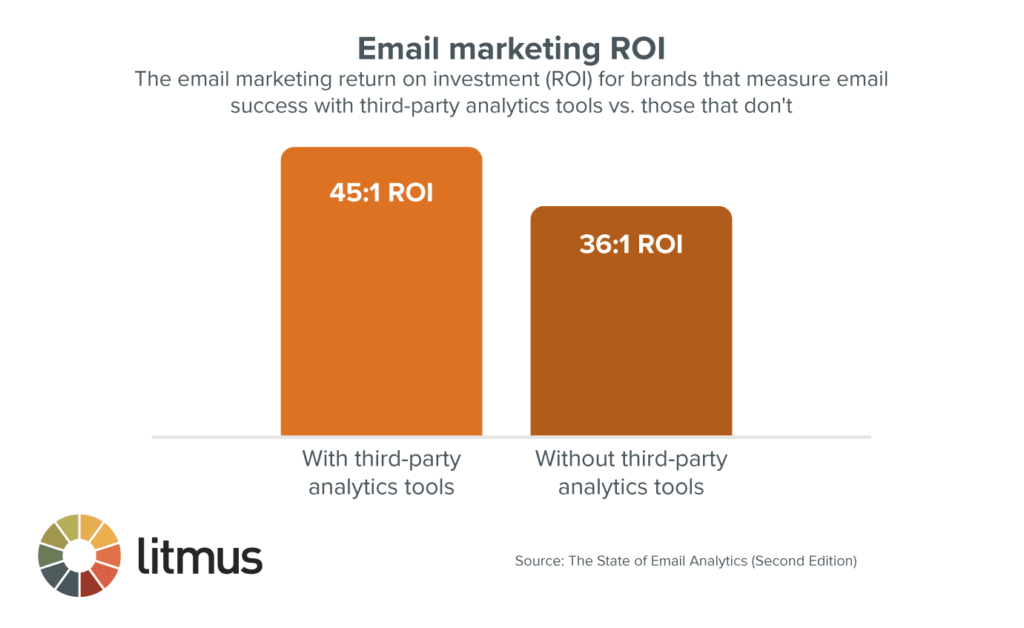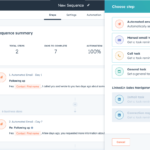To track email marketing success, monitor key metrics like open rates, click-through rates, and conversion rates. Use analytics tools to gather and analyze this data effectively.
Email marketing remains a powerful tool for businesses seeking to engage their audience. Understanding how to measure its success can significantly enhance your strategy. Various metrics provide insights into your campaigns’ effectiveness. By focusing on open rates, click-through rates, and conversion rates, you can identify what resonates with your audience.
This data allows you to refine your approach and boost engagement. Effective tracking not only highlights strengths but also uncovers areas for improvement. Embracing these metrics can lead to more impactful email campaigns and ultimately drive sales. Adopting a data-driven mindset is crucial for sustained success in email marketing.
The Importance Of Measuring Email Marketing
Measuring email marketing success is crucial for growth. It helps you understand what works and what doesn’t. Without tracking, you miss opportunities for improvement.
Analytics provide insights into your audience’s behavior. You can see how they engage with your content. This knowledge helps refine your strategy and boosts results.
The Role Of Analytics In Strategy
Analytics play a vital role in shaping your email marketing strategy. They give you the data needed to make informed decisions.
- Open Rates: Indicates how many recipients opened your email.
- Click-Through Rates: Shows how many clicked on links.
- Conversion Rates: Reflects how many completed desired actions.
- Unsubscribe Rates: Reveals how many opted out of your emails.
Use this data to identify trends. Adjust your tactics based on what resonates with your audience. Regular analysis keeps your campaigns fresh and effective.
Benchmarking Your Email Campaigns
Benchmarking helps you compare your campaigns against industry standards. This provides context for your performance metrics.
| Metric | Industry Average | Your Campaign |
|---|---|---|
| Open Rate | 20-25% | [Your Open Rate] |
| Click-Through Rate | 2-5% | [Your Click Rate] |
| Conversion Rate | 1-3% | [Your Conversion Rate] |
| Unsubscribe Rate | 0.1-0.5% | [Your Unsubscribe Rate] |
Compare your metrics with industry averages. Identify areas for improvement. This benchmarking process helps set realistic goals.
Regularly measuring and adjusting your email campaigns leads to success. Track progress to ensure continuous growth.
Getting Started With Email Metrics
Understanding email metrics is crucial for tracking your email marketing success. Metrics provide insights into how your audience interacts with your emails. By analyzing these numbers, you can improve your future campaigns. Start by focusing on a few key metrics that matter the most.
Essential Tools For Tracking
Several tools can help track your email marketing metrics effectively. Here are a few essential ones:
- Mailchimp: Offers robust analytics for email campaigns.
- Constant Contact: Provides detailed reports on email performance.
- HubSpot: Integrates email tracking with CRM for deeper insights.
- Google Analytics: Tracks traffic from your email campaigns to your website.
| Tool | Key Feature |
|---|---|
| Mailchimp | Campaign Performance Metrics |
| Constant Contact | Open and Click Rates |
| HubSpot | Email Engagement Tracking |
| Google Analytics | Website Traffic Analysis |
Setting Up For Success
To track metrics effectively, set up your email campaigns properly. Follow these steps:
- Define Your Goals: Know what you want to achieve.
- Segment Your Audience: Target specific groups for better results.
- Use A/B Testing: Experiment with different subject lines and content.
- Integrate Tracking Tools: Use tools that provide clear metrics.
- Monitor Regularly: Check your metrics frequently to gauge success.
By focusing on these essential tools and setup strategies, you can track your email marketing success effectively.
Open Rate: The Initial Indicator
The open rate is the first glimpse into your email marketing success. It shows how many people opened your emails. A higher open rate means your emails attract attention. This metric helps gauge your audience’s interest in your content.
What Open Rate Tells You
The open rate reveals key insights about your email campaigns:
- Engagement Level: A higher rate indicates strong interest.
- Subject Line Effectiveness: Catchy subject lines boost opens.
- Timing: Email timing affects open rates.
- List Quality: A clean list improves overall performance.
Understanding these factors helps in refining your strategy. Regularly monitor your open rates for continuous improvement.
How To Improve Open Rates
Boosting your open rates requires strategic efforts. Here are some effective methods:
- Craft Compelling Subject Lines: Use clear, engaging language.
- Personalization: Address recipients by name.
- A/B Testing: Experiment with different subject lines.
- Optimize Send Times: Analyze when your audience engages the most.
- Clean Your List: Remove inactive subscribers regularly.
Consider using a table to visualize your open rates:
| Campaign Name | Open Rate (%) |
|---|---|
| Spring Sale | 25% |
| Weekly Newsletter | 30% |
| Holiday Specials | 40% |
Track these metrics to identify trends. Improving open rates is key to email marketing success.

Credit: www.linkedin.com
Click-through Rate: Measuring Engagement
Click-Through Rate (CTR) is a vital metric in email marketing. It shows how many people clicked on links in your emails. A higher CTR means better engagement. Understanding CTR helps improve your email campaigns.
Interpreting Ctrs
CTR is calculated using this formula:
CTR = (Total Clicks / Total Emails Delivered) x 100This formula gives you a percentage. A higher percentage indicates strong interest from your audience. Typical CTRs range from 1% to 5%. Here’s a quick breakdown:
| CTR Range | Interpretation |
|---|---|
| 0% – 1% | Poor engagement; re-evaluate your content |
| 1% – 3% | Average engagement; room for improvement |
| 3% – 5% | Good engagement; keep up the momentum |
| 5%+ | Excellent engagement; analyze what works |
Strategies For Boosting Clicks
Boosting your CTR requires smart strategies. Here are some effective methods:
- Compelling Subject Lines: Create curiosity and excitement.
- Clear Calls to Action: Use action-oriented language.
- Segment Your Audience: Tailor content to specific groups.
- Optimize Send Times: Test different times for maximum impact.
- Mobile-Friendly Design: Ensure readability on all devices.
Experiment with these strategies. Analyze results to refine your approach. Engaging emails lead to higher CTRs and better results.
Conversion Rate: The Bottom Line
The conversion rate is a key metric in email marketing. It shows how many recipients take action after reading your email. Actions can include making a purchase, signing up for a newsletter, or downloading a resource. A higher conversion rate means your campaigns are effective.
Tracking Conversions
To track conversions, use these methods:
- Google Analytics: Set up goals to monitor specific actions.
- UTM Parameters: Add these to your links for detailed tracking.
- Email Service Provider (ESP): Use built-in analytics tools.
Regularly check these metrics:
| Metric | Description |
|---|---|
| Open Rate | Percentage of recipients who opened your email. |
| Click-Through Rate (CTR) | Percentage who clicked on links in your email. |
| Conversion Rate | Percentage who completed the desired action. |
Techniques To Enhance Conversion
Improve your conversion rate with these techniques:
- Segment Your Audience: Send targeted emails to specific groups.
- Craft Compelling Subject Lines: Grab attention with engaging titles.
- Use Clear Calls-to-Action (CTAs): Guide readers on what to do next.
- Personalize Content: Tailor messages to individual preferences.
- Test and Optimize: A/B test different elements for better results.
Implementing these strategies can lead to higher conversions. Monitor and adjust your approach regularly for the best outcomes.

Credit: www.theadfirm.net
Bounce Rate: Understanding Delivery Issues
Tracking your email marketing success requires understanding your bounce rate. This metric shows how many emails did not reach their recipients. High bounce rates can indicate delivery issues. It’s essential to understand the types of bounces and how to reduce them.
Types Of Bounces
Bounces can be categorized into two main types:
| Type of Bounce | Description |
|---|---|
| Soft Bounce | Temporary delivery issues, like a full inbox. |
| Hard Bounce | Permanently undeliverable emails, often due to invalid addresses. |
Understanding these types helps you identify the root cause of delivery problems.
Reducing Bounce Rates
Lowering your bounce rate improves email delivery. Here are some effective strategies:
- Regularly Clean Your Email List: Remove invalid or inactive emails.
- Use Double Opt-In: Ensure subscribers confirm their email addresses.
- Monitor Engagement: Track opens and clicks to gauge interest.
- Segment Your Audience: Tailor messages to specific groups.
- Test Your Emails: Check for errors before sending.
By implementing these tactics, you can significantly reduce your bounce rates.
Unsubscribe Rate: Keeping Tabs On List Health
The unsubscribe rate is a key metric for email marketing. It shows how many people leave your subscriber list. Monitoring this rate helps maintain a healthy email list. A high unsubscribe rate can signal problems in your content or targeting.
Analyzing Unsubscribes
Understanding why subscribers leave is crucial. Here are some common reasons:
- Irrelevant content
- Too many emails
- Poor email design
- Unclear value proposition
To analyze unsubscribes, follow these steps:
- Track the unsubscribe rate regularly.
- Segment your audience.
- Identify trends in unsubscribe reasons.
- Collect feedback from unsubscribers.
Use a simple formula to calculate the unsubscribe rate:
Unsubscribe Rate = (Number of Unsubscribes / Total Emails Sent) x 100Maintaining A Healthy Subscriber List
A healthy subscriber list boosts engagement and conversion rates. Here are tips to keep your list in shape:
| Tip | Description |
|---|---|
| Regularly Clean Your List | Remove inactive or bounced emails every few months. |
| Personalize Your Content | Use names and interests to make emails relevant. |
| Set Expectations | Let subscribers know what type of emails to expect. |
| Optimize Sending Frequency | Find a balance that keeps subscribers engaged. |
Keeping tabs on your unsubscribe rate is essential. It reveals how well your emails resonate. A lower rate indicates strong engagement and satisfaction.
Email Sharing/forwarding Rate: Extending Reach
The email sharing/forwarding rate plays a crucial role in expanding your audience. It measures how often recipients share your emails. A higher rate means more people see your content. This can lead to increased engagement and conversions.
The Power Of Referral
Referrals can significantly boost your email marketing success. Each share introduces your brand to a new audience. This network effect amplifies your reach without additional costs.
- Increased Visibility: Shared emails reach new eyes.
- Trust Building: People trust recommendations from friends.
- Cost-Effective Growth: Gain new leads without spending more.
Tracking the referral rate helps understand your audience better. Use unique links in emails to measure shares accurately.
Encouraging Shares And Forwards
Encouraging recipients to share your emails can be simple. Use clear calls-to-action (CTAs) in your content. Here are some effective strategies:
- Make it Easy: Include sharing buttons in your emails.
- Incentivize Sharing: Offer rewards for sharing.
- Create Shareable Content: Use engaging visuals and useful information.
Test different approaches to see what resonates. Monitor your sharing rate regularly. Adjust your strategies based on what works.
| Strategy | Benefit |
|---|---|
| Clear CTAs | Guides readers on what to do next. |
| Incentives | Motivates recipients to take action. |
| Engaging Content | Encourages natural sharing. |
Monitoring the email sharing rate helps refine your strategy. Focus on creating value. Keep your content relevant and engaging.
List Growth Rate: A Sign Of Vitality
The list growth rate is crucial for email marketing success. It indicates how well your audience is expanding. A healthy list means more potential customers. Tracking this rate helps you understand your marketing efforts.
Measuring List Growth
To measure your list growth, follow these steps:
- Track the number of subscribers over time.
- Calculate the growth rate using this formula:
Growth Rate (%) = [(New Subscribers - Unsubscribes) / Total Subscribers] 100
For example, if you start with 100 subscribers, gain 20 new ones, and lose 5:
| Metric | Value |
|---|---|
| New Subscribers | 20 |
| Unsubscribes | 5 |
| Total Subscribers | 100 |
| Growth Rate | 15% |
This simple calculation shows your list’s health. A positive growth rate shows vitality.
Effective List Building Strategies
Boost your list growth with these effective strategies:
- Offer Incentives: Give discounts, free trials, or exclusive content.
- Create Quality Content: Share valuable information that engages readers.
- Use Social Media: Promote your email sign-up on various platforms.
- Optimize Your Signup Form: Keep it simple and easy to find.
- Run Contests: Encourage sharing to grow your list quickly.
Implement these strategies to increase subscribers. Monitor your list growth rate regularly. Adjust your tactics based on what works best.
Revenue Per Email: Quantifying Success
Understanding Revenue Per Email (RPE) is crucial for measuring your email marketing success. RPE helps you see how much money each email generates. This metric provides insights into your campaign’s effectiveness. Tracking RPE can guide your strategies and improve future campaigns.
Calculating Rpe
Calculating RPE is simple and straightforward. Use this formula:
RPE = Total Revenue from Emails / Total Emails Sent
Follow these steps to calculate:
- Track total revenue generated from a specific email campaign.
- Count the total number of emails sent in that campaign.
- Use the formula to find RPE.
For example, if you earned $500 from 1,000 emails, your RPE is:
This means each email brought in $0.50. Regularly calculating RPE helps in understanding your email’s financial impact.
Maximizing Revenue Through Targeting
Targeting the right audience increases your RPE. Here are some effective strategies:
- Segment Your Audience: Divide your list based on interests.
- Personalize Content: Use names and tailor messages.
- Optimize Send Times: Send emails when users are most active.
Implementing these strategies can enhance engagement. More engagement often leads to higher revenue.
Consider A/B testing different messages. This helps identify what resonates best with your audience. Use the insights to refine your targeting efforts.
| Strategy | Benefit |
|---|---|
| Segment Your Audience | Increased relevance and engagement. |
| Personalize Content | Higher open and click-through rates. |
| Optimize Send Times | Better chances of conversion. |
Maximizing RPE requires focused targeting. Implement these strategies for better results.
Integrating Multiple Metrics For A Comprehensive View
Tracking email marketing success requires looking at several metrics. Each metric tells a different part of the story. Combining these metrics gives a complete picture of your campaign’s performance.
Creating A Dashboard
A dashboard helps visualize important metrics in one place. It makes tracking progress easy. Use tools like Google Analytics or email marketing software to create your dashboard.
Include the following key metrics:
- Open Rate: Measures how many people opened your email.
- Click-Through Rate (CTR): Shows how many clicked on links inside your email.
- Conversion Rate: Indicates how many completed desired actions, like purchases.
- Unsubscribe Rate: Reveals how many opted out of your emails.
| Metric | Importance |
|---|---|
| Open Rate | Measures interest in your subject line. |
| Click-Through Rate | Indicates the effectiveness of your content. |
| Conversion Rate | Shows the real impact on sales. |
| Unsubscribe Rate | Helps identify potential issues in your emails. |
Making Data-driven Decisions
Using your dashboard, analyze data regularly. Look for trends in your metrics. This helps you understand what works and what doesn’t.
Here are steps to make data-driven decisions:
- Identify your top-performing emails.
- Compare metrics across different campaigns.
- Adjust your strategy based on findings.
- Test new ideas and measure their impact.
Regularly review your metrics. Stay flexible. Adjust your emails to improve engagement and conversions.
Case Studies: Success Stories And Lessons Learned
Tracking email marketing success involves learning from real-world examples. Case studies reveal strategies that work and those that don’t. By studying these stories, marketers can adapt and improve their campaigns.
Real-world Examples
Here are some notable case studies that show how businesses excelled in email marketing:
| Company | Strategy Used | Results Achieved |
|---|---|---|
| Company A | Personalized emails based on user behavior | Increased open rates by 30% |
| Company B | A/B testing subject lines | Boosted click-through rates by 25% |
| Company C | Segmented email lists | Improved conversion rates by 40% |
Analyzing What Works
Each case provides key lessons on effective email marketing:
- Personalization: Tailor content to individual preferences.
- A/B Testing: Experiment with different elements to find the best fit.
- Segmentation: Divide your audience for targeted campaigns.
Marketers should focus on the following strategies:
- Measure open and click-through rates regularly.
- Analyze customer feedback for insights.
- Adjust strategies based on performance data.
Learning from these examples can lead to better email marketing outcomes. Apply these strategies to achieve greater success.

Credit: www.alore.io
Frequently Asked Questions
How Can I Measure Email Marketing Effectiveness?
To measure email marketing effectiveness, track key metrics like open rates, click-through rates, and conversion rates. Use analytics tools provided by your email service provider. Regularly analyze these metrics to identify trends and areas for improvement. This will help you refine your strategies for better results.
What Are Key Metrics For Email Campaigns?
Key metrics for email campaigns include open rates, click-through rates, bounce rates, and unsubscribe rates. These metrics provide insights into how your audience engages with your emails. Monitoring them helps you understand your campaign’s performance and make necessary adjustments for future campaigns.
How Often Should I Review My Email Performance?
Review your email performance at least once a month. Regular reviews help you stay on top of trends and adjust your strategies promptly. However, consider analyzing data more frequently during major campaigns. This ensures you can optimize your approach in real-time for better engagement.
What Tools Help Track Email Marketing Success?
Tools like Google Analytics, Mailchimp, and HubSpot help track email marketing success. These platforms provide detailed analytics and reporting features. They allow you to monitor key metrics and understand audience behavior. Choose a tool that best fits your needs and budget for effective tracking.
Conclusion
Tracking email marketing success is essential for growth. By analyzing open rates, click-through rates, and conversions, you can refine your strategies. Utilize tools like Google Analytics for deeper insights. Continuously adapt your campaigns based on data. This approach ensures your email marketing efforts yield the best possible results for your business.



